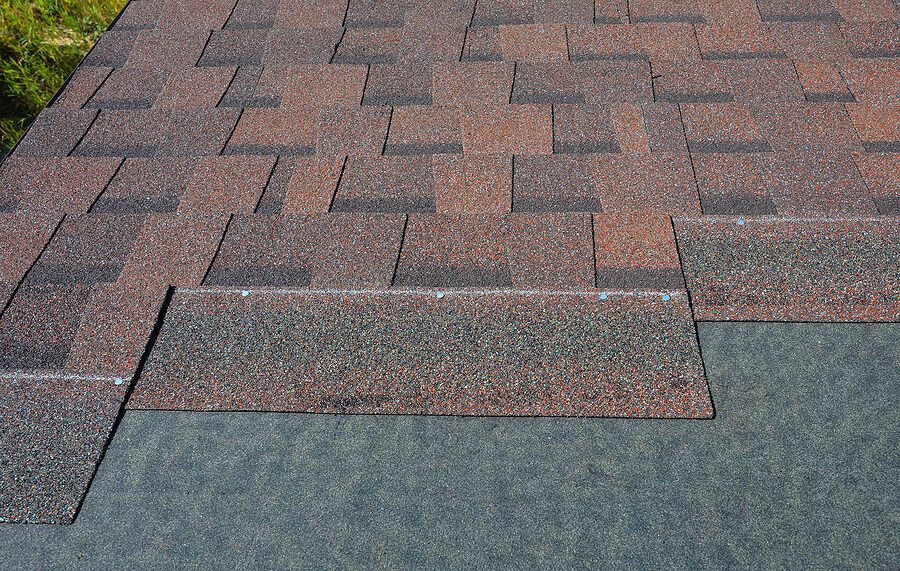Understanding your roof’s components is crucial to proper maintenance and avoiding expensive repairs. Your roof’s health depends on many factors, and one critical element that should not be ignored is roof flashing. This blog will dive into roof flashing details, why it’s important, and the various flashing materials available.
What is Flashing on A Roof?
Flashing is a material used to protect your roof from water damage. It’s installed in areas where the roof intersects with another structure or feature, like a chimney, vent pipe, or skylight. Roof flashing directs water away from these vulnerable areas, preventing leaks and water damage inside your home.
The Importance of Properly Installed Flashing
Properly installed flashing is essential to the long-term health of your roof. If flashing is not installed correctly, water can seep into the gaps between the roof and the structure. Such leak causes rot, mold, and other water damage – resulting in expensive repairs and roof replacements. Here are some of the reasons why properly installed flashing is so important:
- Prevents water damage: Flashing diverts water from vulnerable areas to prevent it from entering the building. Without proper flashing, water causes structural damage, mold growth, and other costly repairs
- Extends your roof’s life: Proper flashing installation prevents water from seeping under the shingles or tiles and can extend the life of the roof by preventing rot, corrosion, and other forms of damage
- Improves energy efficiency: Proper flashing also improves the energy efficiency of your building by preventing air leaks. This can help keep your heating and cooling costs down and make your building more comfortable for occupants
- Adds aesthetic appeal: Properly installed flashing can give your roof and walls a finished, polished look, while poorly installed flashing can detract from the overall appearance of your building
Types of Flashing
There are several different flashing types for roofing. Here are the most common ones:
- Galvanized Steel Flashing: This is not a recommended option especially in the Florida climate. Although it is a galvanized metal, it is still susceptible to rust over time. We only use aluminum flashing, as it will not rust.
- Aluminum Flashing: this is another popular choice for roof flashing. It’s lightweight, rust-resistant, and easy to work with. Aluminum flashing is often used in areas where the flashing will be visible, like around dormer windows or skylights.
- Copper Flashing: the most expensive choice for roof sheathing is copper. Although it costs more than steel or aluminum, it’s also more beautiful and sturdy. The distinctive patina that copper flashing acquires over time gives it a distinct appearance that many homes find attractive.
- Lead Flashing: for millennia, roofs have been constructed with lead sheathing. It’s favored for bespoke flashing apps because it’s malleable and simple to work with. Lead flashing is also incredibly strong and can last for many years.
- PVC Flashing: this newer roofing material is lightweight, pliable, and easy to work with. It’s commonly used when the flashing needs to be flexible – around curved surfaces or in small spaces.
Any flashing material you choose must be installed by a qualified roofing contractor, regardless of the substance. For the flashing to effectively prevent damage to your roof, it must be installed properly.
Types of Flashing Designs
In addition to the type of material used, different types of flashing designs are available. The most common types include step, continuous, valley, drip edge, and cap flashing.
Step flashing protects the roof where it meets a tall component like a chimney, while continuous flashing protects the roof where it intersects with a horizontal structure like a skylight.
Valley flashing is installed in areas where two roof surfaces intersect to form a valley, while drip edge flashing is installed along the roof’s edges to prevent water from getting underneath the shingles. Lastly, cap flashing protects the top of a parapet wall or other vertical surface.
Don’t risk a botched roofing project due to improper or re-used flashing. When you get a quote for any type of roofing work, ask that companies representative what their plans are for the existing flashing. If they plan on re-using existing flashing, ask them why, and if there are options for replacing the flashing.
Hire a professional roofing contractor to protect your roof from leaks and water damage. Jack C. Wilson Roofing Co. is a reliable choice for all your roofing needs. Contact us right away for top-notch roofing services and flawless flashing installation.
FAQs
Do flashing materials protect more than just the roof?
Yes. While they primarily shield the roof structure, flashing also helps protect interior walls, insulation, and ceilings by preventing water infiltration that can lead to rot or mold.
Can flashing materials expand and contract with weather changes?
Many flashing materials are designed to withstand temperature shifts. They flex slightly to accommodate expansion and contraction caused by hot summers or freezing winters, helping maintain a tight seal.
How do flashing materials improve a roof’s durability?
By sealing off joints and edges where water tends to collect, flashing materials reduce the risk of long-term damage. This extends the overall life of your roofing system.
Are roof flashing materials resistant to UV exposure?
Most modern flashing materials are UV-resistant. This allows them to maintain their integrity even with constant sun exposure, which is crucial for preventing cracking or deterioration over time.
Do flashing materials also serve an aesthetic purpose?
Absolutely. While primarily functional, flashing can also be selected to match or complement your roof's appearance, giving the structure a clean and finished look.
Can flashing materials help with energy efficiency?
Indirectly, yes. By preventing leaks and keeping moisture out, flashing helps maintain proper insulation performance and indoor comfort, which can reduce energy consumption.
Is flashing needed around features like skylights or dormers?
Definitely. Areas where the roof meets other structures like skylights, dormers, and vent pipes require flashing to direct water safely away from seams and edges.
Do all flashing materials require maintenance?
Over time, flashing may need inspection and touch-ups due to weather exposure or settling. While high-quality materials last longer, regular roof checkups help ensure flashing continues to perform effectively.
Can flashing materials be used in green or eco-friendly roofing systems?
Yes. Many sustainable roofing systems integrate flashing to ensure waterproofing without compromising environmental goals. Some flashing materials are also recyclable or made from eco-conscious sources.


